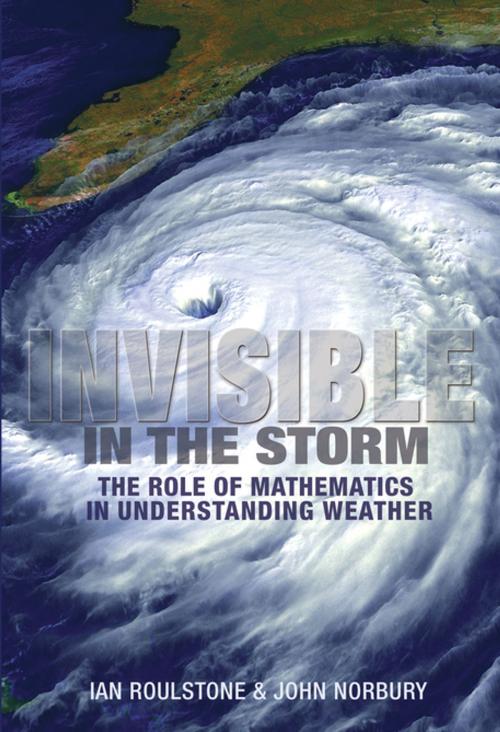Invisible in the Storm
The Role of Mathematics in Understanding Weather
Nonfiction, Science & Nature, Mathematics, Applied, Science, Other Sciences, Meteorology| Author: | Ian Roulstone, John Norbury | ISBN: | 9781400846221 |
| Publisher: | Princeton University Press | Publication: | February 21, 2013 |
| Imprint: | Princeton University Press | Language: | English |
| Author: | Ian Roulstone, John Norbury |
| ISBN: | 9781400846221 |
| Publisher: | Princeton University Press |
| Publication: | February 21, 2013 |
| Imprint: | Princeton University Press |
| Language: | English |
Invisible in the Storm is the first book to recount the history, personalities, and ideas behind one of the greatest scientific successes of modern times--the use of mathematics in weather prediction. Although humans have tried to forecast weather for millennia, mathematical principles were used in meteorology only after the turn of the twentieth century. From the first proposal for using mathematics to predict weather, to the supercomputers that now process meteorological information gathered from satellites and weather stations, Ian Roulstone and John Norbury narrate the groundbreaking evolution of modern forecasting.
The authors begin with Vilhelm Bjerknes, a Norwegian physicist and meteorologist who in 1904 came up with a method now known as numerical weather prediction. Although his proposed calculations could not be implemented without computers, his early attempts, along with those of Lewis Fry Richardson, marked a turning point in atmospheric science. Roulstone and Norbury describe the discovery of chaos theory's butterfly effect, in which tiny variations in initial conditions produce large variations in the long-term behavior of a system--dashing the hopes of perfect predictability for weather patterns. They explore how weather forecasters today formulate their ideas through state-of-the-art mathematics, taking into account limitations to predictability. Millions of variables--known, unknown, and approximate--as well as billions of calculations, are involved in every forecast, producing informative and fascinating modern computer simulations of the Earth system.
Accessible and timely, Invisible in the Storm explains the crucial role of mathematics in understanding the ever-changing weather.
Some images inside the book are unavailable due to digital copyright restrictions.
Invisible in the Storm is the first book to recount the history, personalities, and ideas behind one of the greatest scientific successes of modern times--the use of mathematics in weather prediction. Although humans have tried to forecast weather for millennia, mathematical principles were used in meteorology only after the turn of the twentieth century. From the first proposal for using mathematics to predict weather, to the supercomputers that now process meteorological information gathered from satellites and weather stations, Ian Roulstone and John Norbury narrate the groundbreaking evolution of modern forecasting.
The authors begin with Vilhelm Bjerknes, a Norwegian physicist and meteorologist who in 1904 came up with a method now known as numerical weather prediction. Although his proposed calculations could not be implemented without computers, his early attempts, along with those of Lewis Fry Richardson, marked a turning point in atmospheric science. Roulstone and Norbury describe the discovery of chaos theory's butterfly effect, in which tiny variations in initial conditions produce large variations in the long-term behavior of a system--dashing the hopes of perfect predictability for weather patterns. They explore how weather forecasters today formulate their ideas through state-of-the-art mathematics, taking into account limitations to predictability. Millions of variables--known, unknown, and approximate--as well as billions of calculations, are involved in every forecast, producing informative and fascinating modern computer simulations of the Earth system.
Accessible and timely, Invisible in the Storm explains the crucial role of mathematics in understanding the ever-changing weather.
Some images inside the book are unavailable due to digital copyright restrictions.















